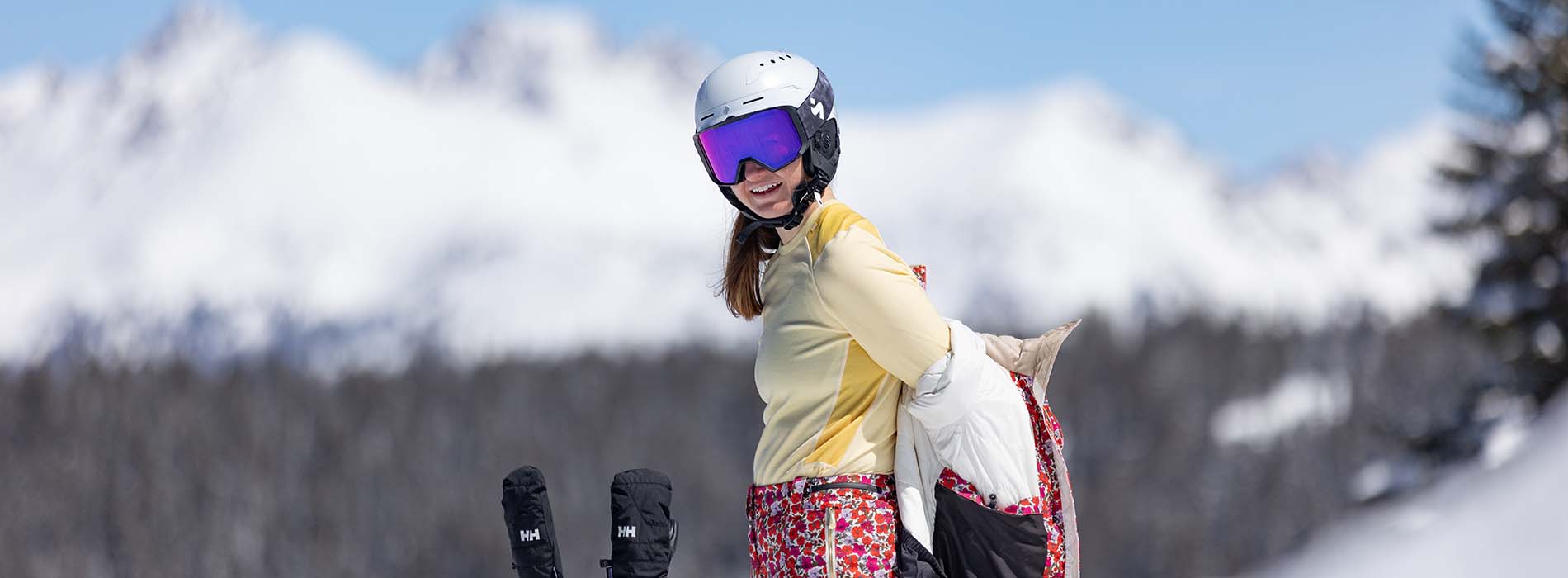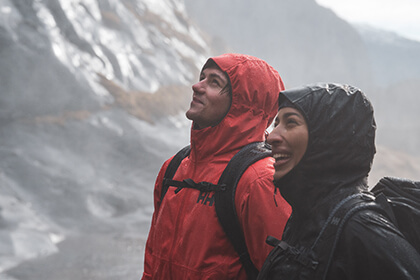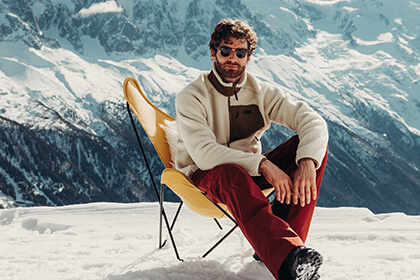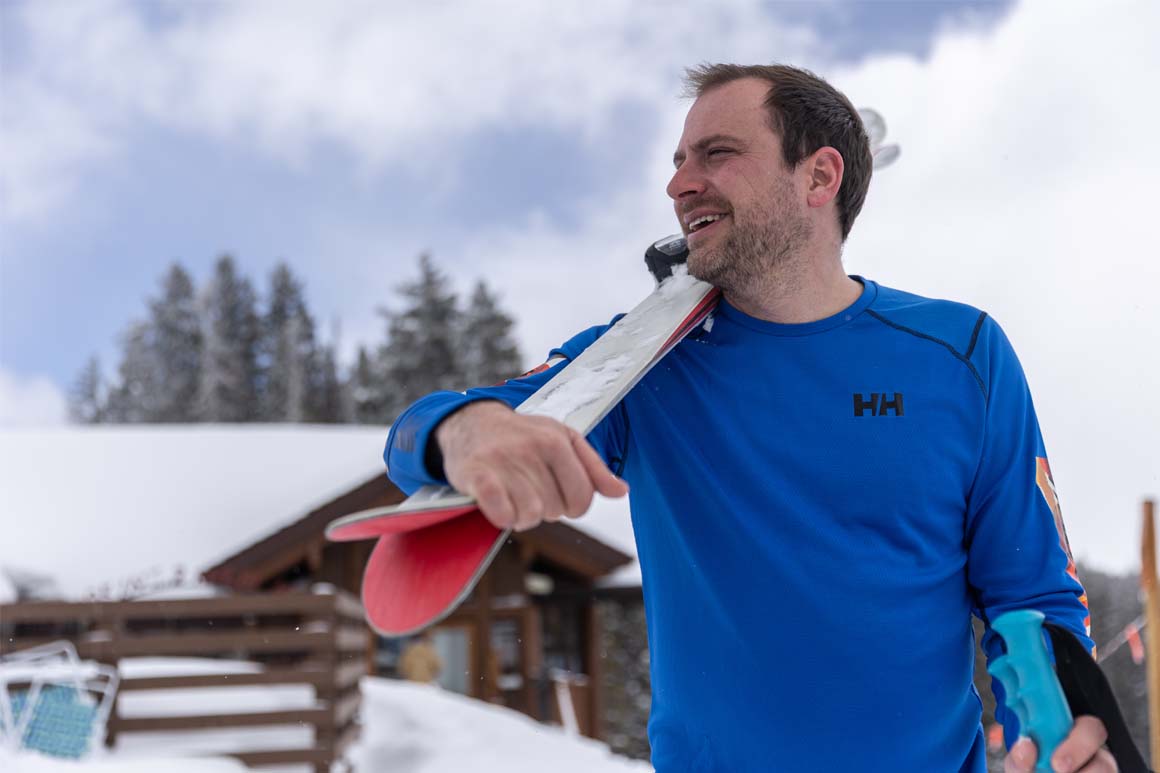
Everything you need to know about base layers
September 21, 2023
Update: November 08, 2024
3 min read
Choosing the right base layer is the foundation of an enjoyable adventure. Our guide explains their purpose and how moisture-wicking materials, fabric weight and fit can affect comfort in the outdoors.
Explore Helly Hansen base layers
WHAT IS A BASE LAYER?
A base layer is a piece of clothing, made from materials that are designed to keep you comfortable in changing conditions and activity levels. Its main purpose is to transport moisture away from the body so you can stay warm and dry.
BASE LAYER MATERIALS
Most base layers are made of either synthetic material or merino wool. These are the most common materials, though you may come across silk on the rare occasion. Whichever you choose, they each offer their own benefits and drawbacks. We recommend that you steer clear of a cotton base layer because it absorbs moisture like a sponge. One sweaty day in cotton may leave you feeling cold and damp, instead of dry and comfortable.
Our base layers for men and women are available in a range of garments — from short-sleeve to long-sleeve tops and from shorts to pants.
Merino wool base layers
Merino wool is a natural fiber grown by Merino sheep, and a popular choice for base layers due to its natural moisture management qualities. Merino wool on its own is more susceptible to wear and tear, which is why we combine it with other materials (to enable longer-lasting use).
which merino wool base layer is best?
Our most popular merino wool base layers are called LIFA® Merino and feature a 2-layer construction:
- the inner layer is made using 100% LIFA® to help push moisture away
- the outer layer is made from 100% merino wool to help absorb and wick away moisture
We believe that this combination of synthetic and wool delivers the best balance of warmth and moisture management.
If you're taking on tougher terrain, we've got an exciting new range called Durawool. With a blend of of 55% ZQ-certified merino wool and 45% Cordura®, Durawool gives you an extra edge when it comes to tackling brush.
when to use merino wool base layers
Longer duration activities
Stop-and-go activities
Low intensity activities
Extremely cold conditions
pros of merino wool
Temperature regulation
Odor control
Easy to care for
Better shape-retention of garment
cons of merino wool
Less cost-efficient
Less durable
Slower to dry
Synthetic base layers
Synthetic base layers are made of material like polyester, nylon, or polypropylene. Our range of LIFA® Active and Solen base layers use LIFA®. This unique fabric is based on a yarn technology that moves moisture away from the skin and transports it to the surface of the fabric, where it evaporates, keeping you warm, dry and comfortable.
When to use synthetic base layers
High intensity activities where you build up a sweat
Water-based activities in spring/summer
If packing light is a priority
pros of synthetic base layers
Breathable
Cost-effective
Durable
Effective at wicking away moisture
Machine-washable
Quick to dry
cons of synthetic base layers
Can start to smell in a short space of time
Takes longer to degrade
Top tip: synthetic base layers can smell a bit more than merino wool, but there are steps you can take to quench the stench.
Explore LIFA® Active
LIFA® Active is our most versatile base layer range. It has the moisture wicking qualities to keep you cool as you build up a sweat. And with a light touch of insulation, it's a popular choice for year-round use.

Men's LIFA® Active Base Layer Pants

Men's LIFA® Active Crew Base Layer

Women’s HH LIFA® Long-Sleeve Crew Base Layer

Women's LIFA® Active Base Layer Pants

Men's HH LIFA® Lightweight Base Layer Pants

Men's HH LIFA® Stripe Long-Sleeve Crew Base Layer

Women's HH LIFA® Base Layer Pants

Women’s Versalite Cinched Fleece

Men's LIFA® Active Stripe Crew Base Layer

Men's HH LIFA® T-shirt

Women's Versalite Half Zip Fleece

Women's LIFA® Active Crew Base Layer

Men's HH LIFA® Seamless Racing 3/4 Length Pants

Unisex H1 Pro Seamless Graphene 3/4 Pants

Women's LIFA® Active Stripe Crew Base Layer

Unisex H1 Pro Seamless Graphene 3/4 Pants

Unisex H1 Pro Seamless Graphene Top

Men's HH Comfort Light Set

Unisex H1 Pro Seamless Graphene Top

HH LIFA® Seamless Racing Top
Explore LIFA® Active Solen
Get UPF 50+ sun protection and moisture management to beat the heat in our Solen base layers. These sun protective t-shirts, tanks and dresses use S.Café® and LIFA® Active fabric technology. By infusing the fabric with recycled coffee grounds, S.Café® apparel protects you from the sun while feeling cool to the touch. It’s quick-dry, odor-resistant and durable. Our LIFA® Active fabric technology performs in heat. It’s soft, breathable and wicks moisture away from your skin.

Women's HH Tech Crew Long Sleeve 2.0

Women's HH Tech T-shirt 2.0

Men's HH Tech T-shirt 2.0

Men's HH Tech Crew Long Sleeve 2.0

Women's Shine Long Sleeve Crew

Women's Shine Solen Half-Zip Sun Hoodie

Men's Shine Solen Half-Zip Sun Hoodie

Men's HH Tech Graphic T-shirt 2.0

Women's Shine Solen Cover Up Dress

Women's Shine Solen T-shirt

Men's Shine Solen T-shirt

Men's Shine Long Sleeve Crew

Women's Tofino Solen Shorts 4" 2.0

Women's HH LIFA® Active Solen Long Sleeve

Men's HH LIFA® Active Solen Long Sleeve Base Layer

Men's LIFA® Active Solen Graphic Hoodie

Women's HH LIFA® Active Solen T-shirt

Women's HH LIFA® Active Solen Tank

Men's HH LIFA® Active Solen T-shirt

Men's Tofino Solen Long Sleeve Shirt
Can you wear a base layer on its own?
Yes! A base layer can be worn either as a single layer or under another garment. If you're heading into unpredictable conditions or hiking over multiple days, we recommend that you adopt a 3 layer system where you start with a base layer, add a midlayer (fleece or woolen jumper) and finish with an outer layer (like a shell jacket).
Should you wear anything underneath a base layer?
Ideally, any next-to-skin clothing (including bras and underwear) should offer moisture-wicking qualities. As a rule of thumb, we recommend synthetic in the summer and wool in the winter. Remember that the more snug the fit, the more effective your next-to-skin clothing will be at transporting moisture away from your body, keeping you comfortable and dry.
What size base layer should you look for?
We recommend you go with your normal size because we already take into account that base layers should fit as close to the skin as possible.
Explore our base layers

Choose like a pro
Our base layers are worn by professionals every day, for all types of climates and activities. Learn more about each product and choose the one that best suits your needs.

December 15, 2025 6 min read
Cold Weather Hiking Tips
Stay warm and safe on the trails this winter. Discover cold weather hiking tips, from layering strategies to essential gear and hydration advice.

December 09, 2025 5 min read
How to Choose a Sailing Jacket
Learn how to choose a sailing jacket with our guide to waterproofing, breathability, and durability. Find the best jacket for your performance on the water.

December 04, 2025 4 min read
How Does Waterproof Gear Work
Learn how waterproof gear works. Our guide explains membranes, DWR, and breathable technology to show how outdoor apparel provides ultimate protection.

December 04, 2025 4 min read
How to Wash a Fleece
Learn how to wash a fleece to keep it soft, warm, and long-lasting. Our guide covers using gentle detergent, avoiding fabric softeners, and proper drying methods.
